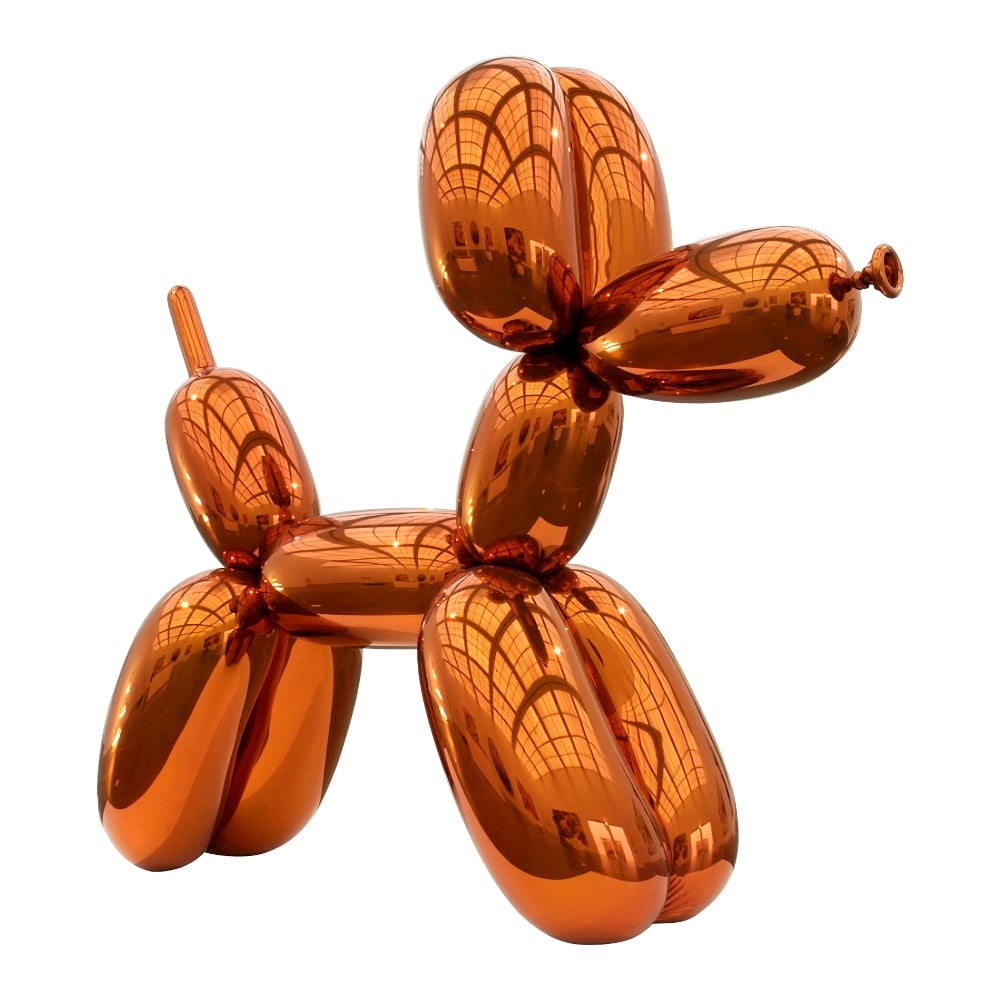Auctions
Study Says Art Investment Is a Bad Bet, But Experts Say Otherwise


Eileen Kinsella


Jeff Koons’s Balloon Dog (Orange) (1994—2000) sold at Christie’s for $58.4 million last November, the highest price ever paid at auction for a work by a living artist
According to the 2014 Wealth Report, an annual summary produced by real estate consultancy Knight Frank, fine art ranked as the weakest collectible from an investment standpoint. The study claimed that fine art investment returned negative 3 percent from mid-2012 to mid-2013, so, in actuality, a loss.
Clearly the hordes of buyers who flocked to one of roughly a dozen art fairs spread across Manhattan this past week didn’t get the memo.
Is art investment really so bad? Even considering the costs of insuring, shipping, and caring for artworks—not to mention the imprudence of flipping a major work in a short time period—many collectors seem to make a lot of money buying and selling art. Take, for instance, the auctions last fall that made record numbers, such as the record-shattering $691.6 million evening sale at Christie’s.
According to the “Knight Frank Luxury Investment Index” (KFLII), other “passion” investments performed significantly better than art. Classic cars posted the highest gain, at 28 percent growth over 12 months. Meantime, coins were up 10 percent for the year, and stamps, to judge by “The Stanley Gibbons China 200” rare stamp index, rose 36 percent in value between 2011 and 2012.
But a 12-month window isn’t really a time frame that serious art investors consider. “Whether art is a good or bad investment isn’t so dependent on the last year or two,” says Asher Edelman, a collector and financier who runs Art Assure, an art lending company. “Over the long term, it’s quite a good investment as I see it, if it’s carefully chosen, of quality, and if one doesn’t buy into the hype.”
This type of long-range view is illustrated by the $58.4 million paid at a Christie’s auction this past May for Jackson Pollock’s Number 19 (1948). This was almost 25 times the previous auction price paid, also at Christie’s, in May 1993, when the work fetched $2.4 million. Another example was the Christie’s sale last November of Mark Rothko’s No. 11 (Untitled) (1957) that scored $46 million, compared with $1.1 million in November 1992. Although not every artwork sees phenomenal returns such as these, this escalation in value has occurred with more frequency at the top end as the art market continues to grow and attract more superwealthy buyers.
The KFLII study refers to data from Art Market Research, described as “an aggregate of the top 25% of the AMR Old Masters 100, European 19th Century, European Impressionists, Modern Art 100, and Contemporary Art 100 indices.” But the report doesn’t specify exactly what it is measuring. A few questions: Are we looking only at auction results or private treaty sales? What about the primary market? How are artists selected for inclusion in the indices?
The report also declares that “the overall art market is slightly down from its 2011 peak,” which, to me, doesn’t make much sense because 2011 was not an especially strong period in the art market and certainly not a peak year over past decades.
Perhaps the strangest part of the report is the seemingly contradictory statement that when gauged over the past 10 years, art as an investment yielded a lucrative 193 percent return. One hundred and ninety-three percent? How can that be?
Dr. Roman Kräussl, professor at the Luxembourg School of Finance, specializes in art as an alternative asset class. In an analysis published last month, Kräussl wrote that although the art market “tends to lag behind other markets, equity markets in particular, by about a year, it has yielded a handsome average annual return on investment of 19 percent in the last decade and in 2013, alone, it outperformed gold.”